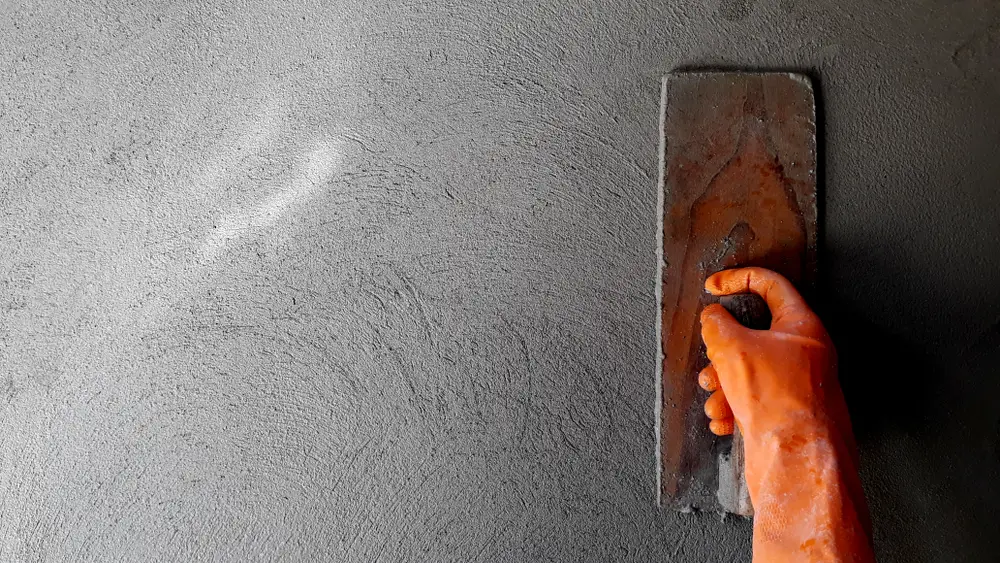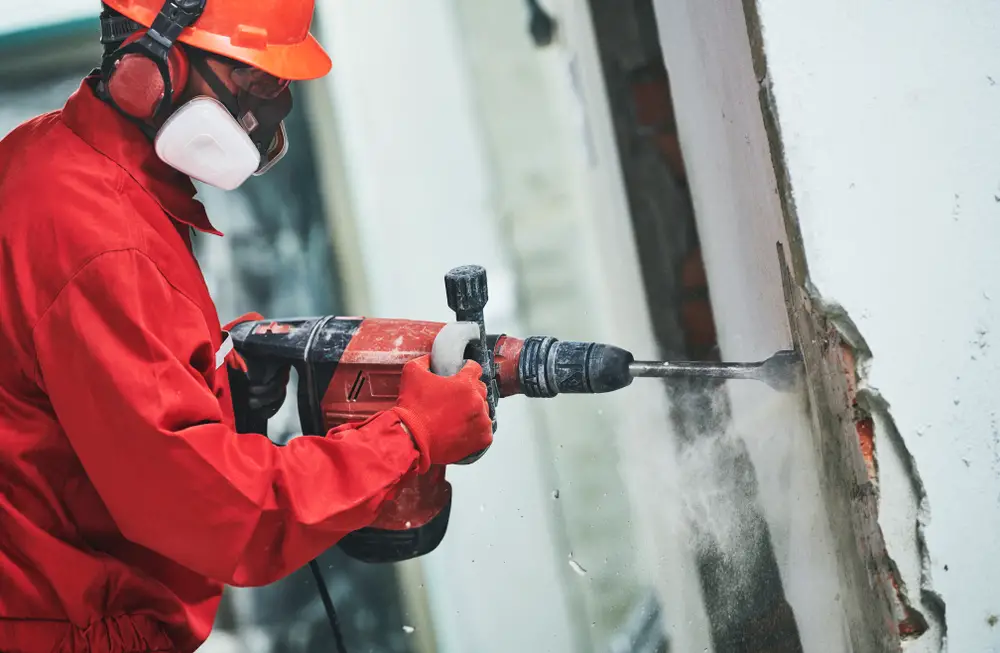Stucco is a common material used as the structure of a home or wall. It’s not the most interesting material in the world, which is why a lot of homeowners like to paint their stucco a different color.
Alternatively, some homeowners like to spruce their stucco walls up with decorations.
However, a lot of homeowners will hesitate to drill into stucco for fear of damaging the material. It looks and feels like concrete, after all, which can make the prospect of drilling pretty scary.
No need to fear, because it is possible to drill into stucco without damaging the wall! Here is a step-by-step guide on how to drill into stucco, complete with a guide on what stucco actually is and the precautions to take.
What is stucco?

Before we go into how to drill into stucco, let’s take a look at what stucco actually is. Stucco is a construction material made of waters, binders, and aggregates (sand is one of the most common aggregates).
It is used as a decorative and protective layer that is applied wet to walls or ceilings, which then hardens.
Traditional stucco is the hardest form of stucco and is made from cement, lime, water, and sand. Its rock-solid form is not hollow, which means that it is the easiest type of stucco to drill into.
Synthetic stucco (also known as Exterior Insulation Finishing System, or EIFS) is slightly more hollow to the touch and requires a sealer to harden and seal it once it has cured to a surface.
If you press into this stucco, it will feel soft and hollow, compared to traditional stucco that is solid.
It is possible to drill through both traditional and synthetic stucco types, though EIFS must only be drilled through if you contact the manufacturer first.
This is because if you drill into synthetic stucco without letting the manufacturer know, you could void the warranty. It could also increase your house’s chances of developing mildew.
How to drill into stucco
You will need:
- Pencil
- Turkey baster
- Drill
- Measuring tape
Step 1: Make Sure of Your Measurements
The first step is possibly the most important when it comes to drilling holes into stucco. Once you’ve drilled the holes, you’ve made a commitment.
So, make sure you know exactly where you want your decorations to go, and mark these with a pencil. If you’re going to drill multiple holes, use a measuring tape to ensure the holes are equidistant to each other.
Step 2: Choose the Right Drill Bit
Now, you need to choose the right bit to drill into the stucco. This can be a complicated task given the number of bit types out there, but we recommend going for a masonry bit.
Masonry bits are designed for drilling through solid materials like concrete, which makes them ideal for drilling through stucco – especially traditional stucco.
Whatever bit piece you go for, make sure to pick one that is the size of the hole you wish to make. This is because using a small bit will encourage the user to push the bit into the wall, which can contribute to crumbling and might damage the bit.
On the other hand, a bit that is too big will not allow the screw to sit firmly and securely in place, instead it will wobble everywhere.
Step 3: Drill
Now’s the step you’ve all been waiting for – drilling!
If the stucco you’re drilling into is a traditional stucco, you will need a hammer drill for this step. This is because the tougher surface will require a drill with more stability, mobility, control, and ultimate power.
To drill into the stucco, put the end of the drill bit directly on the pencil mark that will indicate the hole you are about to make. Make sure to hold the drill firmly and not at an angle, otherwise, the screw will be wonky and might fall out.
Then, switch on the trigger and push the masonry bit into the wall. You shouldn’t need to push too hard, as this can damage the bit. In fact, you should only really push if you feel resistance.
Step 4: Clean Up
So, you’ve drilled your holes into the stucco, and now’s the boring part – cleaning up the mess you’ve made. When you drill a hole into a wall, it will create a lot of dust.
Instead of blowing the dust away with your mouth, use a turkey baster to safely remove the dust from the holes. Blowing the dust away with your mouth will encourage the dust to enter your mouth or eyes, which can cause extreme irritation.
While some might not see the point in doing this, cleaning away the dust will allow you to see how good of a job you’ve done.
Another interesting read: 21 Different Types of Sanders
Precautions of drilling into stucco
The main precaution to be aware of when drilling into stucco is that you could easily drill into electrical wires within the wall. Unfortunately, there’s not much you can do to ensure that this doesn’t happen.
To avoid accidentally cutting into an electrical wire, make sure to drill slowly into the stucco rather than quickly.
Also, you need to make sure to seal the perimeters of the holes you make – especially if you drilled the holes for ducts and pipes. This will prevent the wall from crumbling from the impact!
Can I drill into all stucco?
While it is possible to drill into traditional and synthetic stucco, there are some signs that will indicate when to not drill into some stucco. For example, do not drill into damaged stucco, as the act of drilling will only promote more damage.
If your stucco is damaged, make sure to get it assessed and fixed by a professional.
Likewise, never drill into a stucco surface that you know is covering electrical wires. Sometimes, you might not know where the wires are (so just drill very slowly), but if you’re certain there are electrical wires in the way, don’t bother.
If you drill into electrical wires, it can do a lot more damage than good – especially with the cost of repairing wires.




